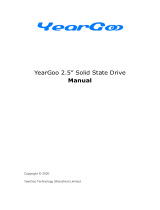
iii PowerEdge R730 and R730xd Technical Guide
Table of contents
1 System overview ................................................................................................................................................................. 6
Introduction ........................................................................................................................................................................ 6
New technologies .............................................................................................................................................................. 7
2 System features .................................................................................................................................................................. 9
Comparison of PowerEdge systems .............................................................................................................................. 9
Specifications ................................................................................................................................................................... 10
3 Chassis views and features .............................................................................................................................................. 13
Chassis views ..................................................................................................................................................................... 13
Chassis features ................................................................................................................................................................ 16
4 Processors ......................................................................................................................................................................... 20
Processor features ........................................................................................................................................................... 20
Supported processors ...................................................................................................................................................... 21
GPU support ..................................................................................................................................................................... 22
Chipset ............................................................................................................................................................................... 23
5 Memory .............................................................................................................................................................................. 24
Supported memory ......................................................................................................................................................... 24
DIMM speed ...................................................................................................................................................................... 25
Memory configurations .................................................................................................................................................. 25
Memory population guidelines ..................................................................................................................................... 25
Memory RAS features...................................................................................................................................................... 26
6 Storage ............................................................................................................................................................................... 28
Internal storage ................................................................................................................................................................ 28
External storage ............................................................................................................................................................... 30
PowerEdge RAID Controllers ........................................................................................................................................ 30
Internal persistent storage .............................................................................................................................................. 31
Optical drives .................................................................................................................................................................... 33
Tape drives ........................................................................................................................................................................ 33
7 Networking and PCIe ...................................................................................................................................................... 34
Select Network Adapters ................................................................................................................................................ 34
PCIe expansion ................................................................................................................................................................ 36
8 Power, thermal and acoustics ....................................................................................................................................... 38
Power consumption and energy efficiency ................................................................................................................ 38
Power supply units .......................................................................................................................................................... 39
Thermal and acoustics.................................................................................................................................................... 40
9 Rack rail systems .............................................................................................................................................................. 44
Sliding and static rail systems ........................................................................................................................................ 44
Cable management arm................................................................................................................................................. 45
10 Operating systems and virtualization ........................................................................................................................... 46
Supported operating systems ........................................................................................................................................ 46
Supported virtualization ................................................................................................................................................. 46
11 Dell OpenManage systems management .................................................................................................................... 47
OpenManage systems management portfolio .......................................................................................................... 47
Dell server management operations ............................................................................................................................ 53
Appendix A. Additional specifications .......................................................................................................................... 55
Chassis dimensions ......................................................................................................................................................... 55
Chassis weight.................................................................................................................................................................. 55
Power supply specifications .......................................................................................................................................... 56
Environmental specifications ........................................................................................................................................ 56
Video specifications ........................................................................................................................................................ 56
Rack rail specifications ................................................................................................................................................... 57





















